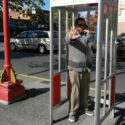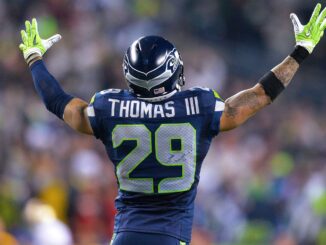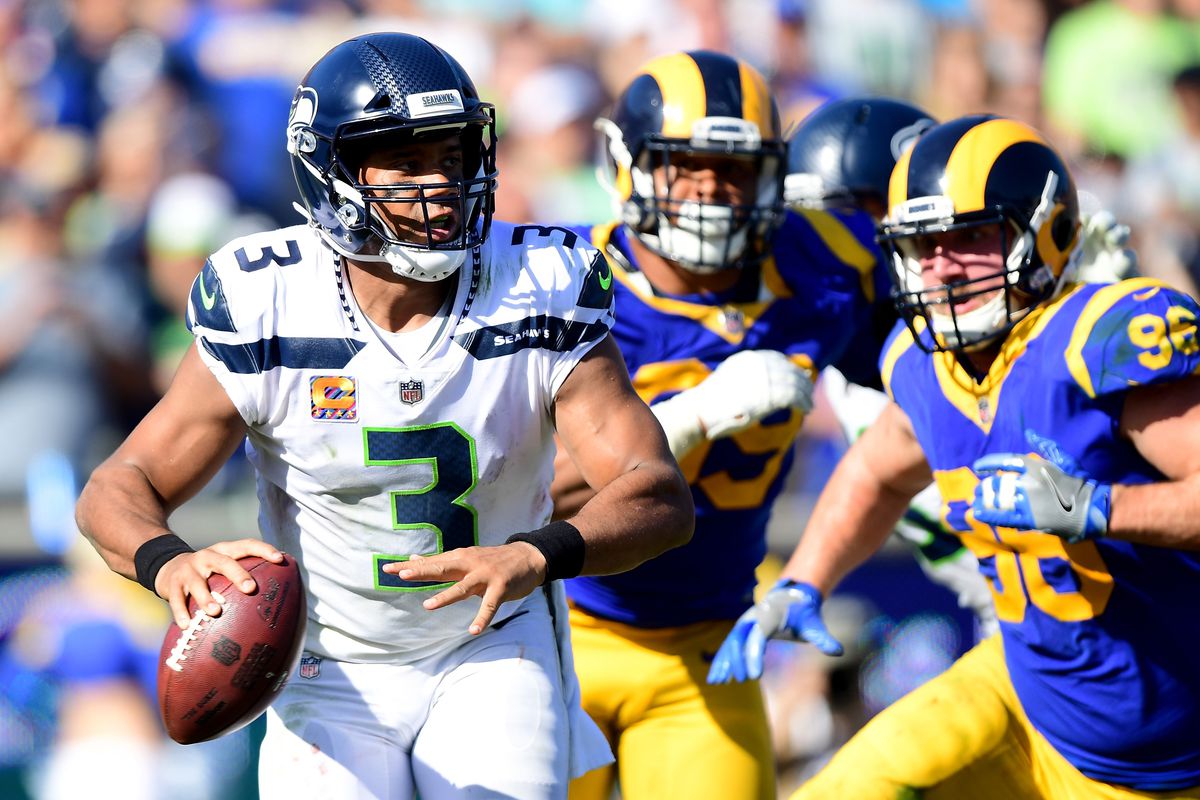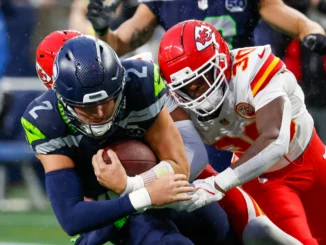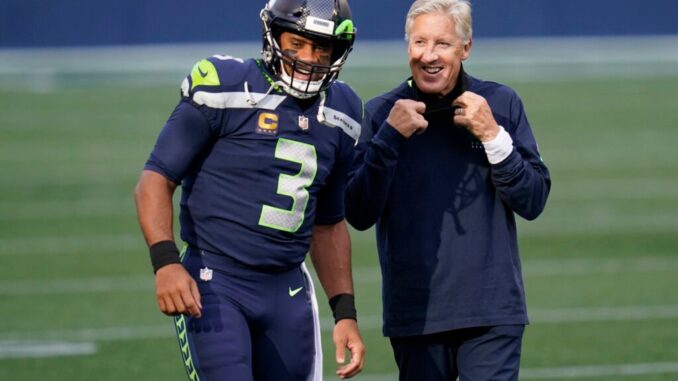
It has been seven years since Seattle last appeared in a Super Bowl or conference championship game, their last appearance in the Super Bowl occurring on February 1st, 2015, and their last appearance in the NFC Championship occurring on January 18th, 2015. This matches their third-longest drought in team history, the first seven years they were in the league before advancing to the 1983 AFC Championship. 22 years is the longest gap between conference championship game appearances in team history, which took place between 1984 and 2005.
They not only got back to the conference championship game in 2005 but also advanced to their first Super Bowl. It would be another eight years until they got back to the conference championship or the Super Bowl, their second-longest streak. They got back to the NFC Championship in 2013 and advanced to their second Super Bowl, winning this time around. In 2014 they again made it to the Super Bowl, but they have not been back to the biggest stage or the stage prior since.
And that brings us to the present. Head coach Pete Carroll, QB Russell Wilson, and LB Bobby Wagner were key components of the 2013-14 Super Bowl teams, and while all three are still major parts of the current team, there are a lot of pieces no longer here. Here are some important players no longer on the roster and what it cost Seattle to bring them here in the first place –
RB Marshawn Lynch (traded for 4th and 5th round picks)
WR Doug Baldwin (undrafted)
CB Richard Sherman (5th round pick)
FS Earl Thomas (1st round pick)
SS Kam Chancellor (5th round pick)
DE Michael Bennett (one year $4M deal)
DE Cliff Avril (two year $13M deal)
LB Bruce Irvin (1st round pick)
OLB KJ Wright (4th round pick)
One of the reasons these players were shown the door via trade, being waived, or being offered low deals in free agency is that they weren’t kids anymore; they had high miles on their bodies after establishing themselves as one of the most physical players at their position for several years. By the time they were nearing the end of their second or third contracts, either their bodies began to break down, or their playing style did. Either way, they weren’t as much use to Seattle any longer and, in most cases, fizzled out of the league entirely a year or two after leaving. Sherman is the lone exception, as he rebounded from an Achilles injury to join San Francisco and help get them to the Super Bowl in 2019. But he wasn’t quite the same dominant defender he had been in his prime in Seattle, and after sitting out most of 2021 with an injury, we’ll have to see if Sherman retires or joins another contender for one last shot at a title.
While the cheap cast-off approach has some fans wondering if Seattle has enough talent overall, they have had a lot of luck in the past mixing blue-chip young players with veteran cast-offs, and perhaps they hope to do the same again. Here are the current players at the same positions and what it cost Seattle to acquire them –
RB Chris Carson (7th round pick)
WR Tyler Lockett (3rd round pick)
CB DJ Reed (claimed off waivers)
FS Quandre Diggs (traded for 5th round pick)
SS Jamal Adams (traded for two 1st round picks)
DE Carlos Dunlap (traded for center BJ Finney and 7th round pick)
DE Rasheem Green (3rd round pick)
LB Darrell Taylor (2nd round pick)
OLB Jordyn Brooks (1st round pick)
The major difference in getting players here in the last several years appears to be the team’s willingness to spend high picks on defense, typically a signal from the front office that they value the on-field product over future assets. The challenge is that they are spending more on draft assets and are not getting the same return on their investments, at least not yet. Every player on the list has been in Seattle for at least two years, and every player on the first list had been here at least two years in 2013. So the players that have been here for two years now have a losing record to show for it and no playoff victories, while the other list had a championship to defend.
Over the course of a few years, they essentially went from having one of the top-5 or top-3 players at their position to guys that were in the conversation for top-5 at best, more likely top-10, and in some cases, that’s a stretch. Not great, and there aren’t many reasons to believe next year will be much different. That’s a significant drop-off in overall talent across the roster. Sure there were some guys where you got better in Lockett and DK Metcalf, but that hasn’t made up for the gaps on the other side of the ball. If your opponent has a balanced team and you are top-heavy on offense, it likely won’t end well.
Seattle was one of the most balanced teams in 2020, but their pass defense was so awful it really didn’t matter. The offense scored a ton of points in the first half of the season, but most of the games were decided by one score because the defense was setting records in the wrong direction. After their bye week, Pete Carroll decided to adjust and move to a ball-control scheme that made them so effective in their Super Bowl years. The defense played a lot better, but the offense struggled to finish drives with reduced opportunities to be aggressive. They limped to the finish line and looked out of their element in their lone playoff game.
In 2021, they brought in a new offensive scheme built around establishing the run and punishing the defense with big plays on play action. The 49ers, Rams, and Packers are all recent teams to shift to this concept, and it worked wonders, so why not Seattle?
In the first few games, they had some bright spots, but the offense was either scoring too quickly or not enough, leaving the defense on the field a lot, leading to many tired players and some big plays being given up. Wilson suffered the first major injury of his professional career in week five and sat out weeks 6-8. He returned after their bye in week 9, but he didn’t look right as Seattle was shutout for the first time in his career. Russ looked off for the next few games, not playing like his pre-injury self until week 17. In week 18, they had the chance to play spoiler, beating the Arizona Cardinals in the regular season finale and dashing their chances to win the division. Wilson was 2-2 when he got hurt and went 4-5 upon his return, for an overall record of 6-7. Since he was hurt late in the game in week five, that loss counts against him as well, which drags him down to 6-8.
For four total weeks last year, the Seahawks’ offense looked ready to run their opponents out of the building. As to the other 13 weeks, no one knows what they saw other than they know it didn’t look right. If the confident and aggressive Russell Wilson we saw in weeks 1-2 and 17-18 shows up for an entire season next year, this league is in trouble. If the cautious and hesitant Russell Wilson we saw in weeks 3-5 and 10-16 shows up, the Seahawks are in trouble. Sure they have a team full of other players that can make a difference, but none of them have the impact on the game that Wilson does. If he plays poorly, it may not matter what anyone else does that day. But as a credit to his greatness, if he plays well, it also may not matter what anyone else does that day. The mark of a great player is that they raise the talent of the people around them, and Wilson definitely does that when he is feeling like himself. Whether it was injury, rust, or something else, something was off for him in large chunks of last season. Let’s hope whatever it was, it’s gone now.
With a new season on the horizon, this team needs to find their lost mojo and establish themselves as a legitimate contender for the NFL crown. The 2013 Seahawks didn’t wait for someone to anoint them; they took the crown and wore it proudly. The 2014 version seemed too eager to make sure no one thought they were a carbon copy, and they paid the price. Take a look at their league-wide rankings in 2013-14; they were a top 10 unit across the board other than a few categories.
In 2013, Seattle was in the top 10 in 12 of 16 key categories. In 2014 they were in the top 10 in 11 of them. Both years they were in the Super Bowl.
When you compare these stellar teams to 2021, there is something to be desired as they were a top 10 unit in just three categories. In 2020, they were a top 10 unit in five categories. Neither team finished their season the way fans hoped, so even if the numbers were solid, the on-field product didn’t get it done.
It might seem unlikely that they need to jump back to a top 10 unit to get back to the Super Bowl, but that might be the case. Take a look at this season’s Rams, who were a top-10 unit in 11 categories. Surprisingly Seattle led the Rams in 3 categories, including overall defense, which might be a bit of a shock to some. But the Rams were not a dominant defense this season, usually helping to close out games but rarely taking them over. It didn’t matter in the end; they have just as many championships as Seattle does since 2013. Here is how 2021 Seattle lines up on paper with the Super Bowl Champions –
You can see how many ways the Rams were the superior team. There were a lot of public statements about this Rams team not being a juggernaut, and no one is going to confuse them for one. But they won it all, and that’s all each team is shooting for, regardless of how they get there.
This team isn’t getting younger, though, especially at the most crucial position. In his 11th season, QB Russell Wilson will be 33 years old and the 5th oldest starting QB in the NFC. Green Bay QB Aaron Rodgers is the oldest at 38, followed by Atlanta’s Matt Ryan at 36, LA’s Matthew Stafford at 34, and Minnesota’s Kirk Cousins is also 33 and just a few months older than Wilson. Including the rest of the league, only two more QBs can be added to the list, Tennessee’s Ryan Tannehill – also 33 and just a bit older than Wilson – and Ryan Fitzpatrick at 39, who might be a backup or retiring after a season-ending injury last year. Best case, Wilson is 7th oldest, worst case, he’s 5th oldest. Long story short, the league is getting younger, and Wilson’s window to win championships at the height of his powers is closing more each year.
Seattle needs to maximize their on-field production and win enough games to get home-field advantage in the playoffs. In both 2013 and 2014, they hosted all of their playoff games, and their home field was known as one of the most intimidating venues in all of sports. Today, I seriously doubt any team is concerned if they have to play Seattle at home. If they can re-establish their defense and the crowd noise, it could go a long way for this team. They are making wholesale changes on offense and defense, not just in players but in coaches and coaching styles as well. Pete Carroll is willing to adjust to the league they are in, not the league they were in when they were the top team in the league. The offense doesn’t need to be spectacular; they just need to score more than the opponent. The defense is where the biggest turnaround needs to happen. For a time, Seattle was known as the greatest defense in the league, and many hold them high enough to be in the argument for greatest of all time. But the current defense is not in anyone’s top 5 unless you’re talking about all-time worst. If this team wants to get back to winning championships, it won’t be on the arm of their $100M QB; it will be on the back and strength of their defense.
When their new scheme is unveiled next season, we’ll know if the coaching and players they have in place is the right fit. If this team struggles to stop their opponent, we will know that the right fix didn’t happen, and another chance to win it all with Wilson still at his peak was wasted. How many more chances will they have? Perhaps not even Wilson knows for sure.

